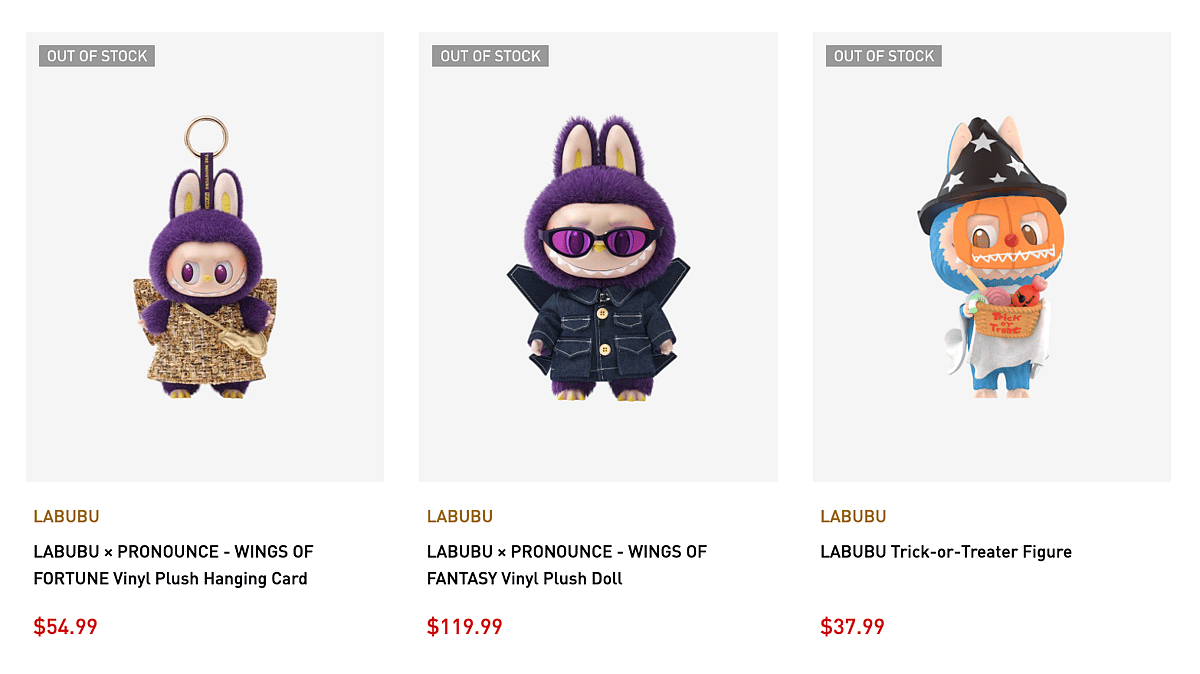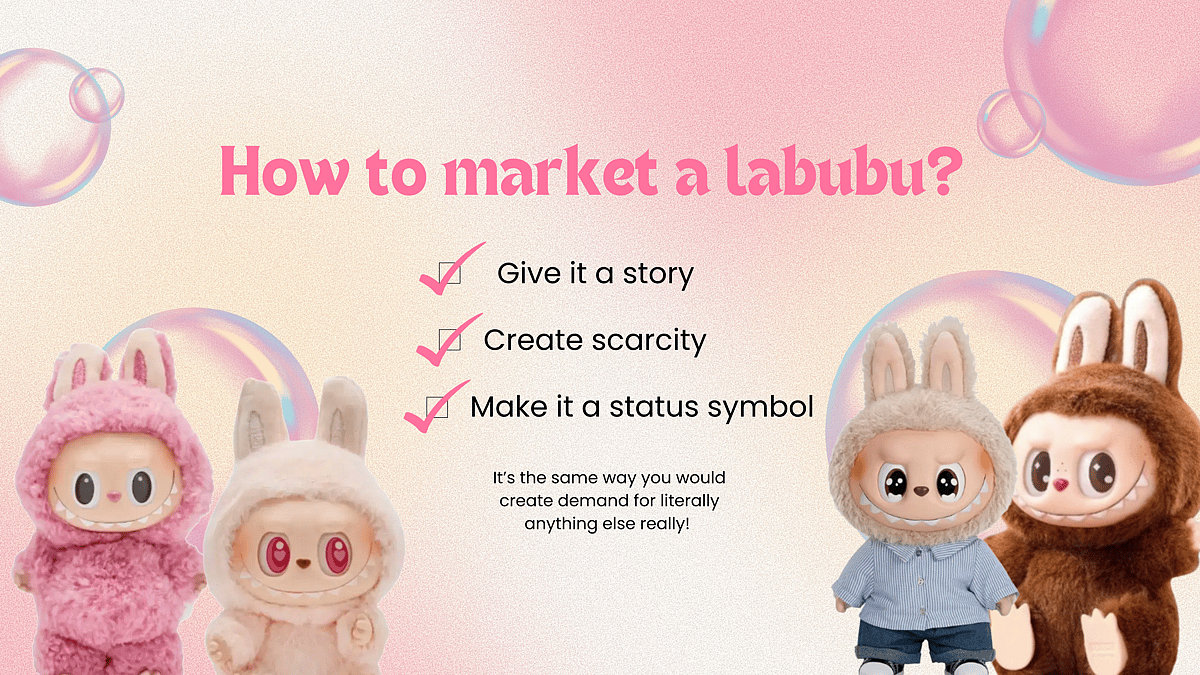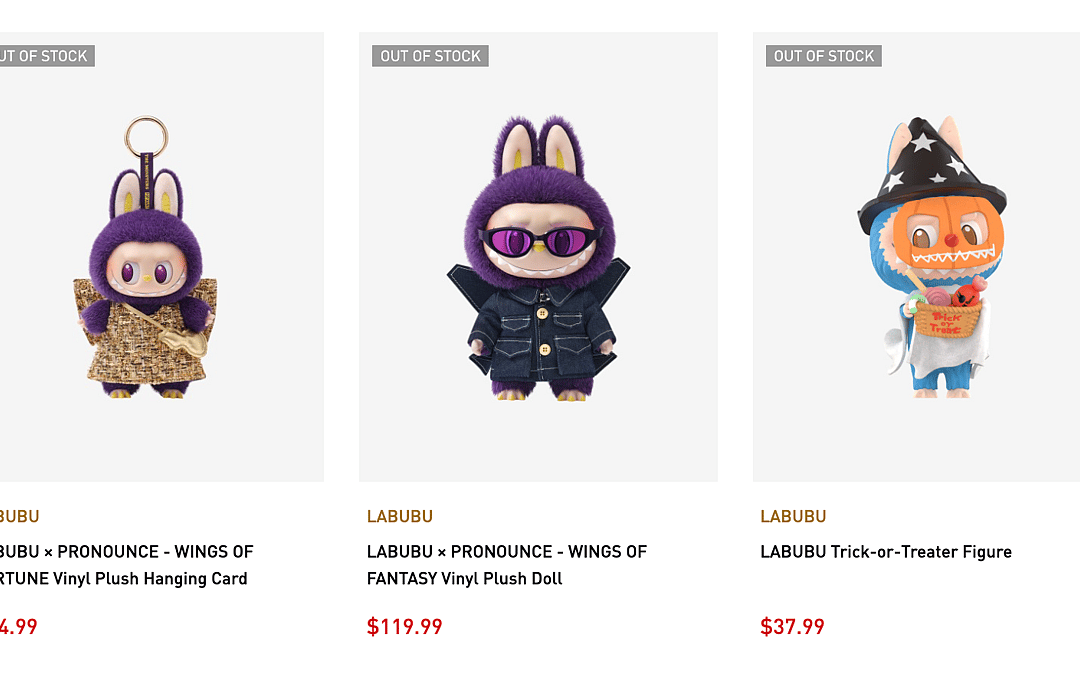Imagine this: silk Prada scarves, Dior kitten heels, and a Miu Miu bag, but with a plush toy peeking out, all big eyes, pastel fur, rabbit ears, and a toothy grin. It’s playful, it’s cute-ish, and it’s pure recession-core couture.
You know that theory where they say when inflation is high, people tend to buy small indulgences that give them a sense of luxury without needing to sell a kidney? Economists call that the “lipstick effect.”
And we’ve seen that happen multiple times, like during the 2001 recession, when Estée Lauder reported a rise in lipstick sales.
Fast-forward to 2025, and people are buying a devilish elf-looking plush toy bag charm called Labubu for anywhere between $10 and $950, sometimes even more, all thanks to celebrity endorsements from BLACKPINK’s Lisa to Dua Lipa to Rihanna. These toys are sold in blind boxes, meaning you don’t even know what version you’re buying until you open it. It’s luck of the draw, which only adds fuel to the collector’s high.
Now the question is, apart from do people actually think this toy is cute, or are they just following a fad?, is the collectables craze making a serious comeback? Or are Labubus the new lipstick?
Because we’ve seen versions of this before. Remember Pokémon cards? What began as schoolyard swaps turned into a full-blown collector frenzy, with cards selling for hundreds, sometimes thousands. The logic isn’t all that different. A small, emotionally charged object that offered surprise, status and a sense of control. Labubu fits right into that playbook.
You might wonder how a mischievous-looking monster doll could qualify as a “luxury” product or even serve as a yardstick for inflation. But when a life-sized Labubu sold for over $150,000 (that’s Rs 1.2 crore, by the way) in a blind box in Beijing just this week, and dolls are hanging off everything from Bottegas to Birkins, you start to understand that this isn’t just about cuteness.
Labubu was created by artist Kasing Lung in partnership with Chinese toymaker Pop Mart. It’s based on a character from Lung’s 2015 book series The Monsters, inspired by Nordic folklore, a forest-dwelling goblin with a face only a mother (or Gen Z) could love. And if you check Pop Mart’s website right now? Almost every Labubu is sold out.

So What’s Going On Here?
The Labubu is not rare, it’s not functional, and it’s not cheap. But it taps into a need for affordable indulgence and curated identity. Think of it as dopamine in doll form.
And in case you think this is just a TikTok-fuelled whim, consider this: queues stretching for hours outside Pop Mart stores, resale prices on niche editions climbing upto hundreds of dollars, entire social media accounts dedicated to “unboxings” and a stock that’s gone absolutely parabolic. Helped by booming demand for the dolls and strong profit growth, shares of Hong Kong based Pop Mart have surged nearly 200% in 2025 alone, with a jaw-dropping one-year return of 584.10%.
The resale market, too, has turned Labubu into a commodity. Some of the “secret” figurines, with odds as low as 1 in 72, now resell for more than $500. That’s an impressive return on something that originally cost under $15. You could call it fandom or you could call it a cleverly disguised asset class.
Welcome To The Era of Curated Scarcity
But Labubu isn’t just a cute crisis mascot. It’s part of a broader cultural pattern. Today’s fashion scene is full of quiet recession cues. People aren’t just dressing for style anymore, they’re dressing for stretch.
Think rugged work jackets, baggy cargo pants, and oversized everything! Clothes that look cool but also double up across work, errands, and weekends. Even food has become part of the aesthetic performance of scarcity. Groceries as accessories in runway shoots? Essentials are being rebranded as aesthetics. Scarcity has never looked so curated.
And all of it points to a generation adapting to scarcity by aestheticising it.

When abundance is off the table, we turn to objects that feel meaningful, emotionally charged, and most of all — collectable. That’s where Labubu comes in. It’s not just a toy, it’s a talisman. A marker of taste and micro-luxury.
Pop Mart isn’t just selling plush toys. They’re selling a feeling: surprise, comfort, and control, all marketed via algorithm-optimised scarcity. And people, especially those priced out of traditional luxury, are buying it.
But of course, none of this is unprecedented. From Pokémon cards and NFTs, history is full of “small thing, big price tag” frenzies. The formula is simple: scarcity + story + social currency = speculative demand. And Labubu checks every box.
The only difference is the timing. Labubu is booming because of the downturn — not despite it. It’s a luxury micro-object for a generation increasingly shut out of traditional wealth-building and traditional luxury. It’s what you buy when you can’t buy much else, but still want to feel like you belong.
So yes, Labubus may well be the new lipstick. But consider this: who profits from the pattern? Who gains when financial caution gives way to serotonin-driven spending? When toys double as therapy, it’s less about consumption and more about coping. Labubu didn’t create this cycle. But it captures it wonderfully. It’s recession-core in figurine form: low-stakes, high-emotion, and eerily cute. That’s exactly why it sells.
. Read more on Economy & Finance by NDTV Profit.

